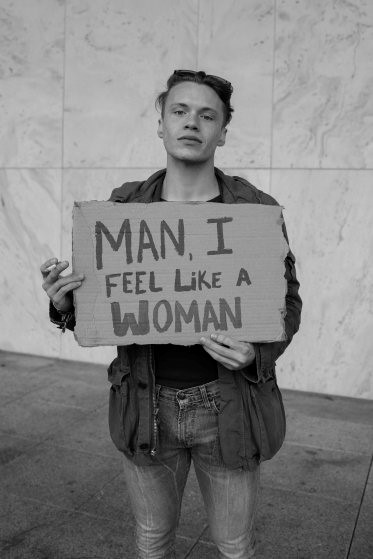GWS IN PRACTICE: ONE MARCHER’S EXPERIENCE
By Kyle Eveleth, PhD Candidate, University of Kentucky

Image credit: Portraits of Dissent: Stories From the Women's March on Washington
Susanna Schrobsdorff
Time Magazine Jan 22, 2017
Hillary Rodham Clinton wasn’t the first woman to run for president of the US—that was Victoria Woodhull in 1872—but Hillary’s campaign came the closest to achieving that elusive goal of getting a woman into the Oval Office. Women like Shirley Chisholm, Patsy Matsu Takemoto Mink, and Linda Jenness (1972), despite not winning major-party nominations or a majority of the vote, paved the way for Clinton’s more than 65 million votes, a popular majority. And yet, the 2016 election unveiled the deep roots of misogyny that still lurk in the nation, even as many push for gender equality.
As before, when those roots were revealed, many citizens took action to pull them out.
Both physically present at the capital and in solidarity across the nation, more than a million protesters showed up on January 21st, 2017to march for women’s rights. As a designated Sister City, Lexington hosted an officially-organized march that drew a crowd of at least 7000 to the courthouse plaza and surrounding areas. State and local representatives, icons of Kentucky-bred arts and sciences, community leaders, citizens young and old, seasoned protestors and new folks alike donned the movement’s distinctive pink kitty hats, picked up signs, and marched in solidarity.
The march lasted around three hours from first gathering to final return, but the gathering spirit that had arisen early that morning as men and women from across the nation set out to walk at the capital continued late into the evening.
In attendance from the Big Blue Nation, among others, was Benjamin Barnes, an undergraduate whose image was used in Time magazine reports on the national Women’s March. We caught up with Benjamin to get a sense for how his first protest went.
- Was this your first time demonstrating? If so, how did you feel about that experience? If not, how did this march stack up against other demonstrations you've participated in?
To my own surprise, this was my first time participating in a resistance movement. Entering into the march itself and seeing all the allies that came to give a voice to women, it was truly mesmerizing. Of course I had expectations going into this march; I couldn’t help but compare this to earlier civil protests I’ve analyzed in my studies, and for the first time in my life I sensed the change that my voice could bring.
- Can you explain the significance of your sign?
Apart from serving as the lyrics to one of Shania Twain’s greatest hits, my sign challenges the gender binary of the United States. All my life I’ve never really fit into the social standards of being a “male,” and I wanted to show how personally I take this issue. Being there, you couldn’t help but feel accepted.
- Did you feel any momentum after this march, i.e. a desire to continue demonstrating, contact your elected officials, or volunteer? If so, what drove it? If not, how did the march satisfy those needs for you?
Without question, being a part of this movement sparked a new flame in me. It was being there, hearing the stories of discrimination and injustice in the land of the free, and seeing those faces that have driven me to persist. Three days after I came back from the Women’s March, I heard of a protest going on in downtown Lexington because of the recent immigration laws passed. I gathered with my friends and took a stand. It almost feels as my duty to express this right with all the political havoc going on.
- How does this march compare with ones you've learned about in GWS courses?
To study the significant marches and protests that have led society to today’s standpoint leaves a sense of responsibility and hope in the student. As I’ve been exposed to this numerous times, I saw this as my earliest opportunity to add a voice to the massive movement that took hold of the world. Weeks after, my girlfriends and I were sitting around when one of us read the headline that this was the largest protest to take place in history. After seeing that, I couldn’t help but to feel that my voice actually matters, and that I’ve taken a stand along with my predecessors.
Thanks, Benjamin.
